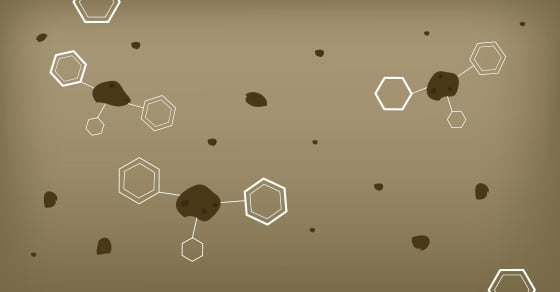Biochar has seen a surge in popularity as a soil amendment as of late, for the many benefits it can offer to soil and for its potential use in carbon sequestration.
With a unique ability to capture and hold particles on its surface, biochar is now being applied to a new application: the improvement of biomethane production in anaerobic digesters in wastewater treatment.
According to an article on Waste Management World, Argonne National Laboratory (ANL), a science and engineering research center, has conducted a study showing that biochar incorporated into anaerobic digesters improves the wastewater sludge digestion process and significantly reduces the need for downstream processing to upgrade biogas into methane gas. Results of the study are promising, and as ANL moves on to scaling up the process for field trials, it’s clear that their findings could have a major impact on biomethane production in many settings.
Anaerobic Digestion
Anaerobic digestion, a process which employs microbial activity in the absence of oxygen to break down sludge, is one of the most widely utilized approaches to wastewater sludge treatment. Biogas is a natural byproduct of this process.
According to the authors of the study, biogas produced in anaerobic digesters is made up of around 50 – 70% methane (CH4), 30 – 50% carbon dioxide (CO2) and trace amounts of hydrogen sulfide (H2S), as well as small amounts of some other impurities. In order to be considered a usable fuel source, the methane content of this gas must be upgraded. Currently this is done by removing the undesirable CO2 and reducing H2S in costly downstream processing.¹
Attempts have been made to streamline the biogas upgrading process, but an economic solution has yet to be found. As the ANL study shows, however, biochar might just be the answer.
Biochar as a Solution to Downstream Upgrading
Biochar is a charcoal product produced by thermally processing biomass via pyrolysis in a rotary kiln. Biochar can be made from any lignocellulosic material, with chemical makeup and characteristics of the resulting biochar differing depending on the source material and process parameters used to create the biochar. The ANL study showed success with biochar derived from corn stover.
According to ANL, by adding the corn stover biochar to the digester, the CO2 is sequestered and the hydrogen sulfide content reduced to levels below detection, resulting in a pipeline quality product of more than 90% methane directly from the digester. In other words, the material is simultaneously broken down to produce biogas and then upgraded to methane gas all within the same unit, significantly reducing the need for downstream processing (and the associated costs).
In addition to this ground-breaking discovery, the authors note that the anaerobic digestion process was improved in other ways as a result of the inclusion of biochar. Most notably, ammonia inhibition was avoided.
Ammonia Inhibition
Ammonia inhibition occurs when a high concentration of ammonia inhibits the generation of methane gas during anaerobic digestion. The ANL study found that adding biochar provided a medium for NH3 adsorption, mitigating the opportunity for ammonia inhibition to occur.¹
Nutrients are Added to Solids
The digestate resulting from anaerobic digesters, often called biosolids in the municipal wastewater treatment setting, are typically dried and either disposed of via landfill, or land-applied in either a raw or granular form.
Land application of biosolids and manure from anaerobic digesters has seen increased interest over the past few years in an effort to realize the nutrient value contained within these materials and create a closed-loop nutrient cycle while adding organic matter back into soils.
While digestate resulting from anaerobic digesters is already rich in nutrients as a result of the source material, the ANL study suggests that the addition of biochar could provide added nutrient value. The study showed increases in Ca, Fe, Mg, and K in the resulting digestate, with potassium (K) exhibiting the highest concentration. Potassium is known to offer a number of benefits to soil.¹
The Impact of Improved Biomethane Production
The results of the ANL study could significantly impact anaerobic digestion and its applications in many ways. Among them:
Increased Viability
The opportunity to significantly reduce the costs associated with downstream processing could improve the overall economics of biomethane production, reducing the barrier to entry and opening it up to smaller-scale wastewater treatment facilities and farms alike.¹
Improved Environmental Sustainability
Combined with the closed-loop nutrient cycle and improved soil environment provided by land application of digestate, a more sustainable approach to nutrient management and the challenges faced by municipalities and farms to handle increasing amounts of waste could be realized. This approach would also offer reduced greenhouse gas emissions over the production of synthetic fertilizers.¹
Conclusion
The ANL study highlights the potential to improve biomethane production via anaerobic digestion through the addition of biochar in what could be an industry game-changer.
Improved process economics, reduced greenhouse gas emissions, and a reduced barrier to entry could revolutionize the production of biomethane for municipal wastewater treatment plants and farms alike, resulting in a more sustainable solution in many ways.
FEECO provides custom rotary kilns for the production of biochar, rotary dryers and complete dryer islands for processing biomass, custom equipment and complete granulation systems for producing a premium granular fertilizer from biosolids and/or manure, as well as feasibility testing and process development, and parts and service support. For more information, contact us today!
SOURCES:
1.Shen, Yanwen, Jessica L. Linville, Meltem Urgun-Demirtas, Robin P. Schoene, and Seth W. Snyder. “Producing pipeline-quality biomethane via anaerobic digestion of sludge amended with corn stover biochar with in-situ CO 2 removal.” Applied Energy 158 (2015): 300-09. Science Direct. Web. Mar. 2017.


